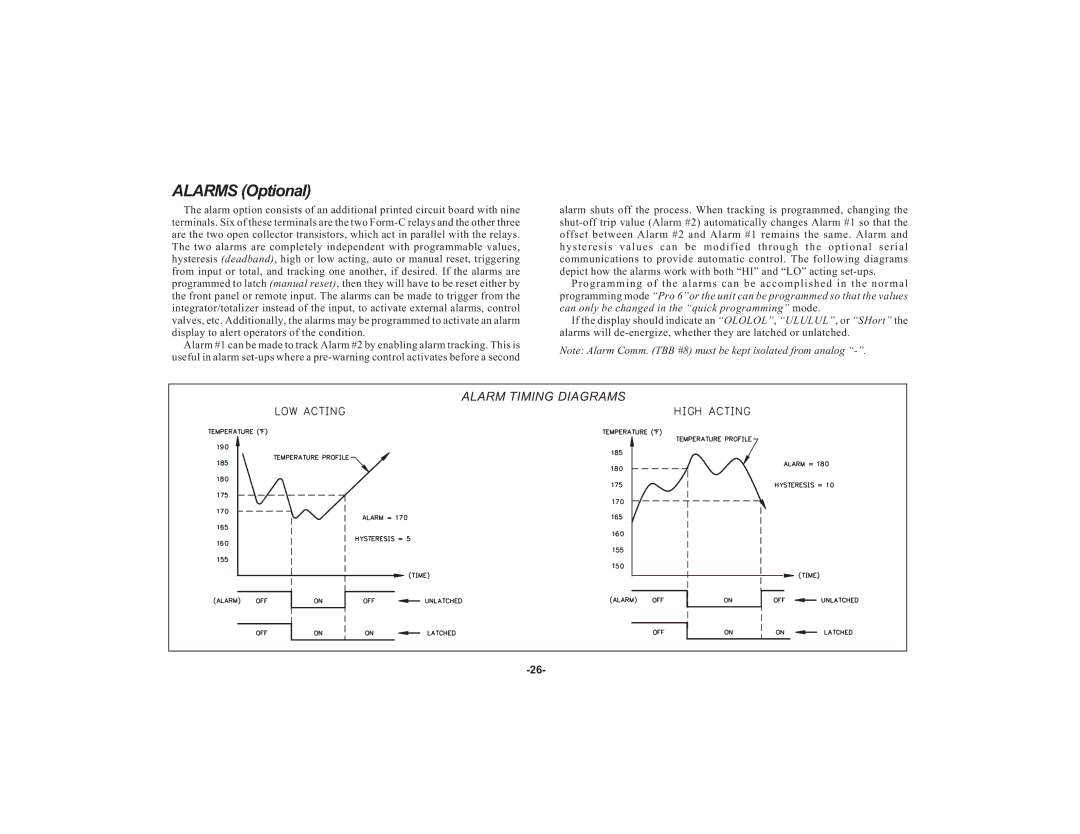ALARMS (Optional)
The alarm option consists of an additional printed circuit board with nine terminals. Six of these terminals are the two Form-C relays and the other three are the two open collector transistors, which act in parallel with the relays. The two alarms are completely independent with programmable values, hysteresis (deadband), high or low acting, auto or manual reset, triggering from input or total, and tracking one another, if desired. If the alarms are programmed to latch (manual reset), then they will have to be reset either by the front panel or remote input. The alarms can be made to trigger from the integrator/totalizer instead of the input, to activate external alarms, control valves, etc. Additionally, the alarms may be programmed to activate an alarm display to alert operators of the condition.
Alarm #1 can be made to track Alarm #2 by enabling alarm tracking. This is useful in alarm set-ups where a pre-warning control activates before a second
alarm shuts off the process. When tracking is programmed, changing the shut-off trip value (Alarm #2) automatically changes Alarm #1 so that the offset between Alarm #2 and Alarm #1 remains the same. Alarm and hysteresis values can be modified through the optional serial communications to provide automatic control. The following diagrams depict how the alarms work with both “HI” and “LO” acting set-ups.
Programming of the alarms can be accomplished in the normal programming mode “Pro 6”or the unit can be programmed so that the values can only be changed in the “quick programming” mode.
If the display should indicate an “OLOLOL”, “ULULUL”, or “SHort” the alarms will de-energize, whether they are latched or unlatched.
Note: Alarm Comm. (TBB #8) must be kept isolated from analog “-”.

